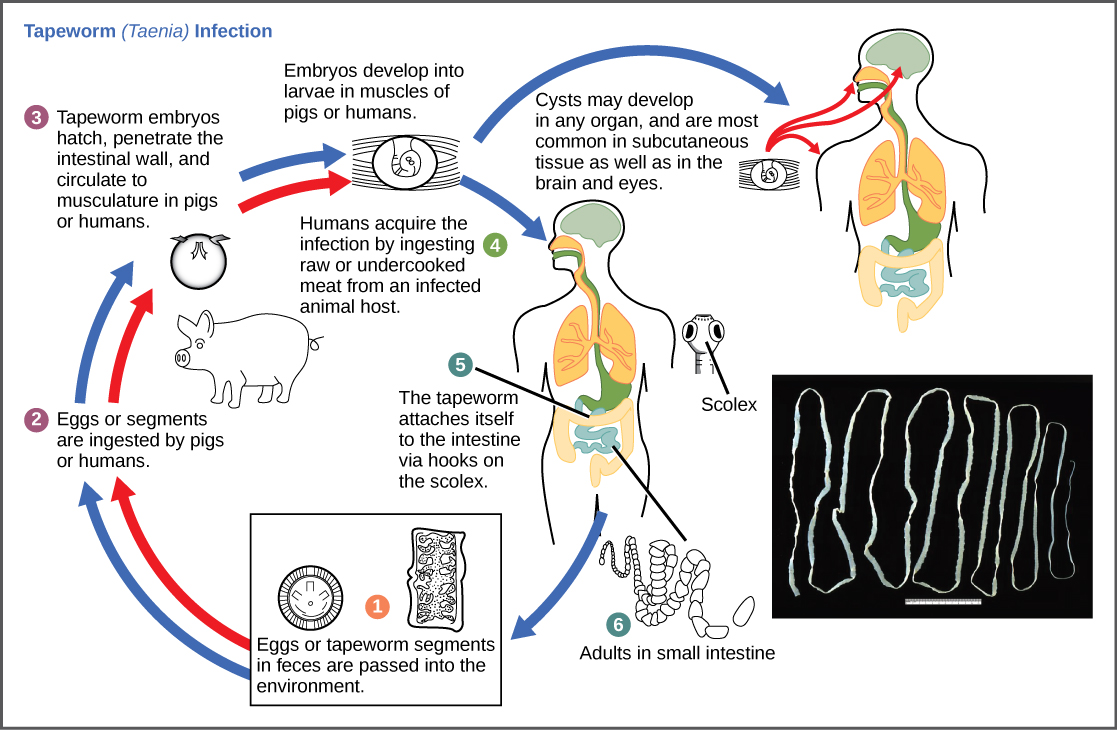6.1.1.3: Parasitismo
- Page ID
- 54377
El parasitismo ocurre cuando un organismo (el parásito) toma nutrientes de otro (el huésped). El hospedador suele ser debilitado por el parásito ya que sifona recursos que el huésped normalmente utilizaría para mantenerse. Los parásitos no necesariamente matan a sus huéspedes. Cuando lo hacen, suele ser un proceso lento, lo que le permite al parásito tiempo para completar su ciclo reproductivo antes de que éste o sus crías puedan propagarse a otro huésped. Un parásito puede permanecer unido al mismo huésped durante toda su vida útil, pero algunos parásitos tienen ciclos de vida complejos que involucran múltiples especies hospedadoras. Por ejemplo, una tenia causa enfermedades en humanos cuando se consume carne contaminada y poco cocida como cerdo, pescado o carne de res. La figura\(\PageIndex{a}\) ilustra el ciclo de vida de la tenia porcina. La tenia puede vivir dentro del intestino del huésped durante varios años, beneficiándose de la comida del huésped, y puede crecer hasta alcanzar más de 50 pies de largo al agregar segmentos. El parásito se traslada de una especie hospedadora a una segunda especie hospedadora para completar su ciclo de vida.

Los parásitos infectan muchos tipos de organismos, incluyendo otros animales y plantas. Por ejemplo, las pulgas y lombrices intestinales son parásitos caninos comunes. Las plantas pueden ser infectadas por hongos, bacterias y virus; también hay plantas que parasitan a otras plantas (figura\(\PageIndex{b}\)). Incluso las bacterias pueden ser parasitadas por virus llamados bacteriófagos.

Atribución
Modificado por Melissa Ha de Ecología Comunitaria de Biología Ambiental por Matthew R. Fisher (licenciado bajo CC-BY)


